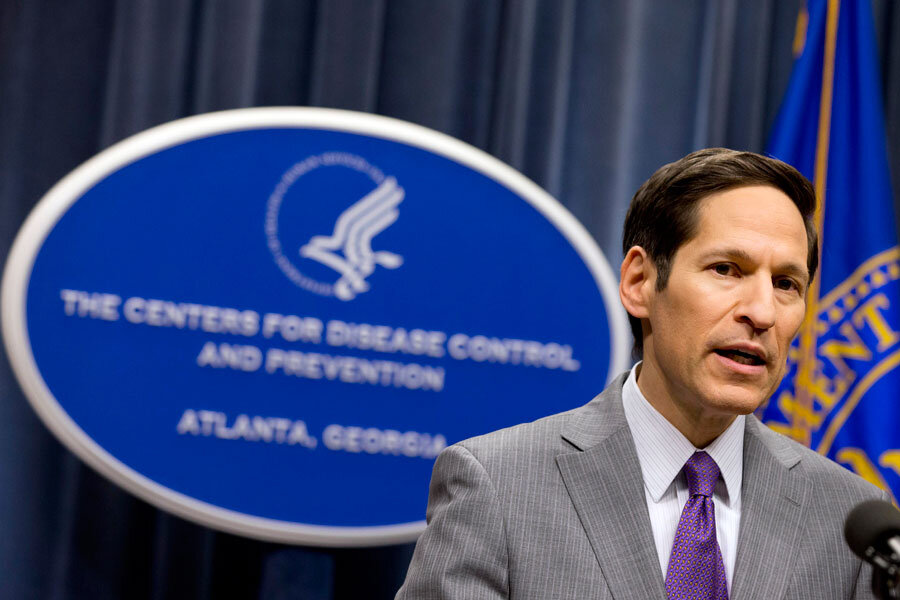First US Ebola case in Dallas: why public health threat remains small
Loading...
| Atlanta
A man traveling to Dallas from Liberia has become the United States’ first confirmed case of Ebola, and its arrival has set in motion the American government’s public health plans to stanch any US outbreak.
As Ebola has spread through West Africa since late 2013, it has drawn a global response that has struggled to contain the epidemic. But public health authorities and the US Centers for Disease Control and Prevention have long insisted that even a few cases in the US are not cause for alarm.
Similar diseases have been identified, quarantined, and controlled without outbreak in the US. That includes a 2008 case where a patient with Marburg, an Ebola-like virus, exposed more than 200 people, yet no one else was diagnosed with the disease.
“If the Ebola virus is exported to the United States, as the Marburg virus was by me, I don’t fear an outbreak here,” Michelle Barnes, the Golden, Colo., woman who brought Marburg to the US, wrote in the Dallas Morning News in August. “Our health care system is prepared. I’m proof of that.”
Tom Frieden, the director of the CDC, is equally confident that America’s Ebola control plan is solid.
“We’re stopping it in its tracks in this country,” Dr. Frieden said at a press conference announcing the Ebola case Tuesday evening. “We can do that because of two things: strong health care … and strong public health that can track contacts and isolate them.”
Medical professionals believe that the disease does not spread through the air but through contact with bodily fluids. Its spread in Africa has been facilitated largely by poor public health systems, lack of sanitary facilities, and folk burial customs that put mourners at risk of infection.
The US has successfully treated American medical personnel who were diagnosed with the disease while helping control the outbreak; three of those have fully recovered, while a fourth is in stable condition at Emory University Hospital in Atlanta.
Anticipating Ebola’s arrival, the CDC has already enhanced surveillance and lab protocols to detect cases. In the case of the man in Dallas, who has not been identified, hospital authorities didn’t diagnose Ebola until the man’s second visit on Sept. 28. He arrived in the US on Sept. 20 and reportedly felt symptoms on Sept. 24. Hospital officials have put three emergency medical technicians and several nurses who came into contact with the man under observation at their homes, and the CDC is investigating who might have been in contact with the man.
The CDC has also provided new Ebola guidance for flight crews, airport medical services, and Customs and Border Protection.
Medical professionals do not dismiss public concerns, but evidence points to successful containment, they say.
“We will see cases," Alessandro Vespignani, a physics professor at Northeastern University in Boston who studies infection rates and air traffic from the Ebola-affected parts of West Africa, told Discovery Health News. "The good news from our modeling is the size of the outbreak is very limited. Even in the worse case, the size of the outbreak in the United States is just two or three individuals."






